Loyal and knowledgeable gardener

Photo by Christopher Gannon.
Surrounded by blooming Black-eyed Susans, Rick Hellmich pulls invasive weeds from a pollinator habitat plot at the former Genetics Lab site on Pammel Drive Monday morning. It's a plot he helped seed for the first time two years ago, following demolition of the building. The plot is in its third year; another one at the former Insectary site a block to the east went in a year earlier.
Hellmich, who retired from Iowa State in 2021 as a research entomologist with the USDA and affiliate professor in entomology, said he's made a hobby of volunteering his care and expertise for the two plots along Pammel Drive.
"I walk the plots and pull up weeds that drop a lot of seeds," he said.
The intent is to thin the vegetation and create more space for the Black-eyed Susans and other flowering plants to spread and thrive.
In addition to provide a habitat for monarch butterflies as well as bees and other pollinators, a pollinator habitat actually is less costly to establish and maintain than turf grass. And the sites present a teaching lab option.
No easy answer with AI chatbots
Instructors across campus continue to adjust to students' increasing use of artificial intelligence (AI). It impacts departments differently but spares no instructor from having to think about how AI alters the delivery and testing of knowledge.
Watch
Faculty members Christine Denison and Michael Bugeja presented teaching talks on AI during CELT's spring series.
Four instructors talked with Inside about chatbots and how they try to limit their use or use them to enhance learning.
Familiarize yourself
Accounting associate professor Christine Denison puts many of her class materials and assignments through ChatGPT before class begins to identify potential responses students may receive when they use it and determine what information it gives users.
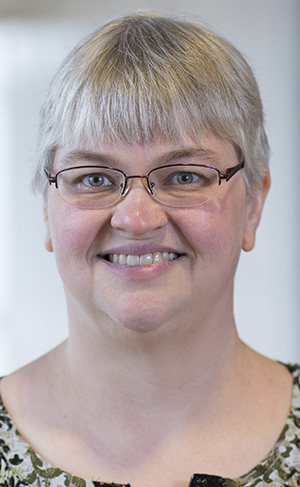
Christine Denison
"Rather than just think about how students can cheat with it, it's what can students do with it," said Denison, who uses the chatbot for teaching and research applications. "It just takes experimentation."
One of her courses this fall focuses on communication, critical thinking and ethics. She will allow students to use ChatGPT, but only if they cite it in their work. It allows Denison to see how students use it and if they are developing critical skills they'll need after graduation.
To avoid cheating, Denison advocates flipping the classroom so lectures are watched outside of class, but work and discussion are during the class meeting. She recommends using ChatGPT in class to generate information before discussing what is right and wrong with the result.
"The instructor can get a good idea of students' knowledge through their comments on what ChatGPT did," Denison said.
She plans several ungraded Canvas quizzes to gauge students' initial knowledge on various subjects. With each assignment Denison asks, "Do I care if they use AI?" The key is to have students, not ChatGPT, achieve the learning objectives in each course, she said.
Know the facts
Greenlee School of Journalism and Communication Distinguished Professor Michael Bugeja sees the impact of AI changing how and what students are taught. Fact checking is vital because chatbots can "hallucinate" or provide false or made-up information. Bugeja said he tells students he won't punish them through grades -- but paints a picture of their future to get the message across.
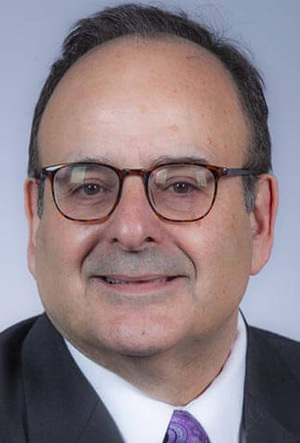
Michael Bugeja
"Those who embrace critical thinking and use chatbots sparingly will be the supervisors of their classmates who did not know how to fact check," he said. "If they want to use ChatGPT in my class, they have to cite it, and if there is an AI hallucination in there, I will call them on it."
He said it's important to make students responsible for everything from attendance to cheating because it will serve them best after graduation. To help combat cheating, Bugeja has students critique his own writing to learn fact checking.
Bugeja, who recognizes the complexity and changing use of AI, said he sees an opportunity for the provost's office, Center for Excellence in Learning and Teaching, Faculty Senate and judiciaries to work together on a statement for the use of AI chatbots.
"We are at a juncture where the norms are changing and we need guidance on what is and is not acceptable in the classroom," Bugeja said. "I would envision a statement that would define proper and improper use."
Bugeja believes every syllabus should have a statement on AI, and developed one for his media ethics course that says, in part:
"We will not be monitoring the use of ChatGPT. But you should know that your instructor’s expertise is technical in nature, and he is quick to identify AI hallucinations. Language models generate false information that is easy to fact check. That said, if you use ChatGPT to help you write a discussion-board response, you will be cheating yourself of the critical thinking that is a hallmark of this class. Chatbots can inspire you. That is fine. But you should write the content."
Denison agreed on the need for a syllabus statement but emphasized the importance of taking time to talk with students throughout a semester about AI use. In instances of suspected use, Denison said she talks with the student and asks them to demonstrate their knowledge during the conversation.
"I had a couple of instances last semester where I had a question, but after talking to one of the students it became obvious she knew the material," Denison said.
Can they code?
ChatGPT's ability to generate computer code would seem to be an issue for computer science instructors, but computer science assistant professor Qi Li said it's user beware.

Qi Li
"If I am just asking for source code, then ChatGPT can find that online, but the strategy is in how you ask the question because you can fool ChatGPT," said Li, who is conducting research on the use of the chatbot. "You can use the same algorithm or ask for the same code, but write it a different way and ChatGPT may fail."
Li did not have rules for chatbots during her spring courses but will allow their use this fall with the understanding that wrong answers will have to be corrected by the student. She sees the need for students to learn how to use chatbots effectively because interacting with them successfully is a process of trial and error.
Students still need to know how to code even if they use ChatGPT to ensure accuracy. Li said students could feed a chatbot more information to help it determine the correct answer. That requires an understanding of classroom lessons and helps them develop communication skills.
"You have to know how to come up with the answer because ChatGPT will give an answer that seems very plausible, but often is wrong because it can't reason and is just mimicking intelligent thinking," she said.
Opportunities and drawbacks
Computer science assistant professor Matt Tancreti taught a freshman computer programming course in the spring and will teach a senior-level course this fall. The use of AI in each illustrates the potential and drawbacks of a chatbot.
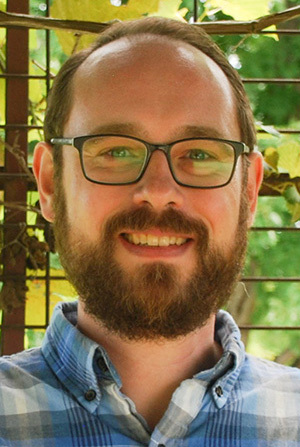
Tancreti
In the freshman course, Tancreti typically tested students through small puzzle problems, but because students can simply copy and paste the question into ChatGPT, he flipped the process.
"We gave them the answer that ChatGPT gave, but it doesn't solve it perfectly and they have to test the code and fix it, if needed," he said. "Cheating tools and ways of cheating have been around for a long time, but what makes this different is how much it lowers the bar for ease of use."
This fall, Tancreti is teaching an analysis and design course and will welcome the use of a chatbot to do more of the "grunt work" and give students more time to develop their ideas.
Tancreti, like many instructors, said he spends more time coming up with novel problems to get around the chatbots. But catering to AI may mean students miss out on learning classic examples.
"Chatbots can take away from the class because now learning is based on more creative problems that are not the classic problems that have been used year after year to teach the subject," he said. "When you go off into industry, you can talk to your colleagues in a common language, which may now be lost."
Tancreti has seen other issues develop in the short time since ChatGPT arrived, including equal access. While older versions of ChatGPT remain free (for now), new versions come with a subscription fee.
Campus life leader arrives next month
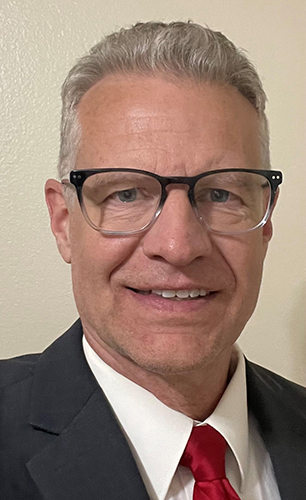
Michael Harwood
Michael Harwood, director of fiscal and facility operations for UM Housing at the University of Montana, Missoula, has been named associate vice president for campus life and director of residence, effective Aug. 11. The campus life unit, created in 2020, integrates the work of staff and student employees in the residence department, ISU Dining and the Memorial Union.
"I am thrilled to welcome Michael to Iowa State University. He will be a great addition to the campus life team and will provide exceptional leadership to the department of residence, ISU Dining and the Memorial Union," said senior vice president for student affairs Toyia Younger. "Michael will bring a wealth of knowledge to Iowa State. His extensive experience with housing, dining services, operations, finance and enrollment management will support our student-centered approach to providing a college experience where all Cyclones can succeed."
Harwood has more than 30 years of experience in student affairs. Prior to his role at Montana, he served as associate vice president for student success (2018-21) at Minnesota State University, Moorhead, and assistant vice president and assistant dean of student life (2008-17) at North Dakota State University, Fargo.
"Iowa State University is recognized for providing an outstanding living and learning experience for students," Harwood said. "I am excited to return to the Midwest and offer my skills and experience to advance the mission and vision of the institution and the division of student affairs."
Harwood earned a bachelor's degree in public administration from Montana State University, Bozeman, and a master's degree in counseling and college student personnel from Minnesota State University, Mankato.
He succeeds Pete Englin, who retired May 1 and had served in the residence leadership role since 2005. Director of residence life Virginia Speight is leading the campus life unit during the interim period.
Interim EO director to be named next week; Wells departs for new position
Carl Wells, director of equal opportunity and Title IX coordinator, will leave the university Aug. 1 to begin a new position as associate dean for campus life at Newberry College in Newberry, South Carolina.
An interim director of equal opportunity and Title IX coordinator will be named next week.
"We're grateful for Carl's service to our faculty, staff and students, and we wish him well in his new position," said President Wendy Wintersteen. "Carl's willingness to collaborate with leaders across all divisions, the way he invited and welcomed input, and his dedication to carrying out the responsibilities of the office at the highest level of professionalism will not soon be forgotten."
Wells joined the university in May 2022, previously serving as senior advisor for civil rights and affirmative action at the University of South Carolina, Columbia.
Under Wells's leadership, the Office of Equal Opportunity launched a new data management system for communications, investigation, prevention and reporting on discrimination, harassment and sexual misconduct issues.
The Office of Equal Opportunity oversees compliance across the university for equal opportunity, civil rights, Title IX and affirmative action laws, regulations and policies. The office is charged with safeguarding a fair and respectful learning and working environment for students, faculty and staff, which includes coordinating the university's compliance with Title IX, the Americans with Disabilities Act, Title VI and Title VII.
Welcome

Jeremy Paul brings more than 20 years of logistics experience with the U.S. Army to his work as director of transportation services. Photo by Christopher Gannon.
Jeremy Paul began as director of transportation services on June 19. He moved into the operations and finance division from the College of Liberal Arts and Sciences, where he served as professor and department chair in military science for four years (2019-23).
Paul leads a team of 11 that provides many vehicle-related services to the university community including: long-term (annual) and short-term (daily) leases, maintenance and repairs, employee van pools from various central Iowa communities, shuttle service to the Des Moines and Ames airports, and customized vehicle graphics in partnership with ISU Printing. He also is responsible for an annual, phased round of vehicle purchases and disposal.
Paul retired from active duty with the U.S. Army last month after more than 20 years as a logistics expert for both war and peacetime operations. Prior to returning to central Iowa four years ago, he trained and coached Army officers conducting various exercises (2018-19) at Fort Leavenworth, Kansas. For nearly a decade before that, he was promoted to leadership posts that put him in charge of logistics planning, delivery and maintenance (for supplies such as vehicles, weapons, medical and communications equipment) for increasingly larger combat units deployed to the Anbar and Baghdad provinces of Iraq and Kandahar province in Afghanistan.
Paul earned a bachelor's degree in logistics and supply chain management from Iowa State and an MBA from Central Michigan University, Mount Pleasant.
Paul's office is in the transportation services building on Haber Road. He can be reached by email at jp2001@iastate.edu, by phone at 515-294-1882.
New WorkFlex request process enhances flexibility
As of June 19, eligible employees interested in a WorkFlex arrangement no longer need to wait for scheduled request windows to apply for the flexible work program or alter an agreement.
"By eliminating windows, the WorkFlex program becomes more flexible for employees and supervisors to modify arrangements as needed," said Ed Holland, university human resources (UHR) director of benefits. "It also allows new employees to make a request and not have to wait for a future window."
Part of the plan
Since its launch in January 2022, requests for WorkFlex have been processed in three-month windows in the fall, spring and summer. Holland said that using specific timeframes during the rollout helped the university community learn what to expect from the process, but the plan always was to move away from application windows once employees and managers understood how the program worked.
More than a year after the first round of arrangements went into effect, employees can now submit a request at any time to start, renew or change a WorkFlex agreement. Though the defined timeline of the windows is gone, the rest of the process is the same. Holland said it may result in quicker turnarounds now that many of the preliminary decisions for how WorkFlex would work for different units have been considered and employees and managers are more familiar with the procedure.
Learn more
Instructions for submitting a WorkFlex request in Workday can be found on the UHR Knowledge Base. For more information, go to the WorkFlex website, contact your HR Delivery representative or email HR Delivery.
Parks makes call to add more study space
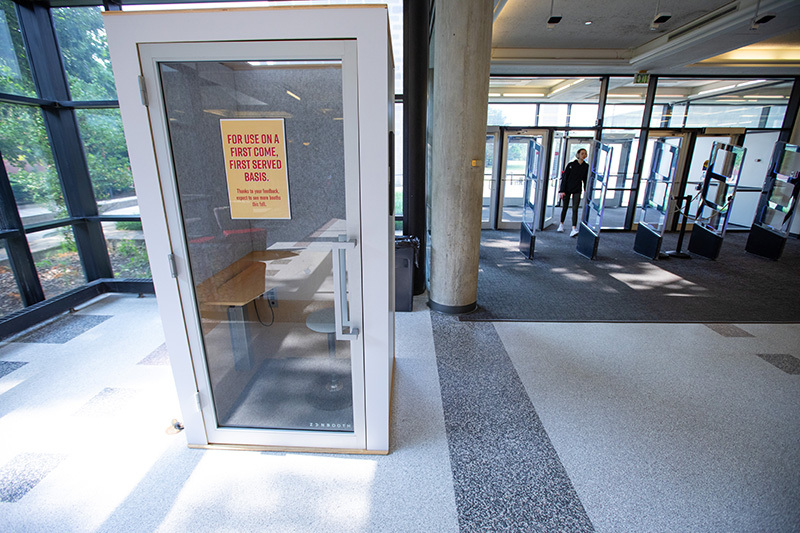
Parks Library will add several single-person booths to the first floor this fall. The booths are noise dampening and allow the user to set the environment to their preference. Photos by Christopher Gannon.
At first glance, for a different generation, they might trigger a flashback to a time when you dropped a coin in the slot to call Mom and asked her to pick you up at the mall. At Parks Library, the single-person booth is a quiet study space even if its resemblance to a pay phone booth is unmistakable.
As the pandemic began to wind down and Parks staff saw a need for an area where instructors and staff could go to make a quiet phone call or conduct an online course, the idea emerged to offer a single-person enclosed booth. This spring, the booth was moved from a staff space to just past the main entrance of the library where students could try it as a study option. Survey results showed considerable interest in adding more booths to Parks' study space.
"It started as finding a quiet option during the pandemic for staff. But the need has arisen for students --- if they have an online class or a need to take a meeting via Zoom -- to have a space like this where they can really control the noise level," said Brent Swanson, budget and finance manager for the library. "Right now, we don't really have a lot of individual study room space, and this is a more economical solution than a major remodel."
The library recently converted areas on the second and third floors into 10 individual study spaces, but the need continues to grow, said library dean Hilary Seo.
"Students are looking for spaces they can control because they all want something different," she said.
The booths
Library staff are collecting bids from several companies for four to six additional booths, with the hope of installing them during the fall semester. They will be placed on the first floor -- the only place they fit because of the dropped ceilings on other levels -- in the Learning Connections Center north of the lobby. Each booth costs less than $7,000 and donations should cover all or most of the cost, Seo said.
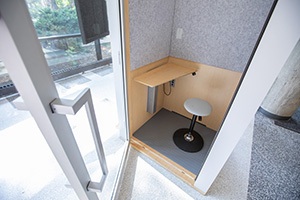
The inside of the booth features a stool and an adjustable-height work surface.
The current wood panel booth measures 80 inches tall, 36 inches wide and 40 inches deep. Additional booths should be similar, including one that will comply with the Americans with Disabilities Act. It has a plexiglass skylight with LED lighting and a dimmer. There is a fan for ventilation, electrical and USB outlets, and a seat with an adjustable desk. The door is self-closing and the booth is sound dampening -- not soundproof, for safety reasons.
Once the booths are in place, faculty, staff and students can reserve them. Use will be monitored and additional booths could be added if demand is high.
"For individual study, our students are asking for low-distraction spaces, and this helps us recognize the needs of our neurodiverse students who may need more privacy to be as successful as they can be when they are studying," Seo said. "Currently, the Periodical Room is the only designated quiet space in the library."
Did you know?
In the last five years, the number of seats within arm's reach of a power outlet in Parks Library has risen from 45% to 70%.
The booths are the latest example of library staff updating available spaces to accommodate the way today's students use them. That includes renovations in recent years that added more group study areas, comfortable seating, natural lighting and lots and lots of power outlets. Staff members survey students on an every-other-year basis to determine the greatest needs throughout the library.
ISU Internal Careers Hub simplifies job search
Iowa State employees seeking internal job opportunities now have a new tool for finding job postings, creating job alerts and managing their applications in Workday -- the ISU Internal Careers Hub, which launched in April.
Dawn Kepley, associate director of talent acquisition for university human resources (UHR), said the talent acquisition team has supported hundreds of internal moves since Workday went live in 2019. She said she hopes the hub helps employees continue to find opportunities for career growth at the university.
Improved navigation
Accessed via the Workday main menu, the hub has four sections -- overview, browse jobs, my job alerts and my applications. Clicking on the icon in the menu will bring employees to the overview section, which provides snapshots of recently added jobs and submitted applications.
Hubs galore
Like the Benefits and Pay Hub launched in June and the Expenses Hub that went live on July 1, the ISU Internal Careers Hub is part of Iowa State's ongoing adoption of new or streamlined functions in Workday.
The job browser lists all jobs available to Iowa State employees and can be filtered by hiring manager, job category, management level, primary location and more. Search results also can be narrowed using key phrases in the search bar. In the job alerts section, employees can create alerts customized by search criteria and choose between daily or weekly notifications in Workday -- found by clicking the bell icon -- and via email.
Employees can view their applications in the applications section. The active tab includes drafts and submitted applications for open positions, while the inactive tab lists applications for closed positions. Recently submitted applications also will appear on the overview page.
One-stop shop
Kepley said the recently added jobs section on the overview page is an exciting addition to Workday because it highlights new opportunities and the hub's functionality streamlines the internal job seeker experience. She encouraged employees interested in learning about other roles at the university to create job alerts so Workday can keep them updated about potential positions.
"The volume of internal applicants across the university continues to be steady and this enhanced platform supports our employees as they manage their career interests," Kepley said.
For more information about the ISU Internal Careers Hub, including a video tour of the hub, visit the ServiceNow page.
Norman shares division update with council
The Professional and Scientific (P&S) Council received an update from senior vice president for operations and finance Shawn Norman at its July 6 meeting.
Norman summarized his listening tour around campus as well as an assessment of the division conducted by consulting firm Grant Thronton International. The objectives that emerged from the organizational assessment -- improvements to financial controls and processes, optimization of technology, enhancements to the university's resource management model, and strategic change and communication within the division -- echoed themes and ideas Norman said he heard on the listening tour. He said it was important to meet with faculty and staff and hear what they had to say about their experiences with the division.
"I'm a very customer service-oriented person and my division has to be that way as well," said Norman, who started at Iowa State in January.
Other business
- Professional development committee chair Jennifer Schroeder said the next event in the council's seminar series is Sept. 12 (2-3 p.m., location to be announced) with university ombuds Laura Smythe.
- Awards committee chair Michelle Thompson reminded councilors to nominate their colleagues to be recognized in the council's Highlighting ISU Staff monthly initiative.
The next P&S Council meeting is Aug. 3 (2 p.m., 3580 Memorial Union).
